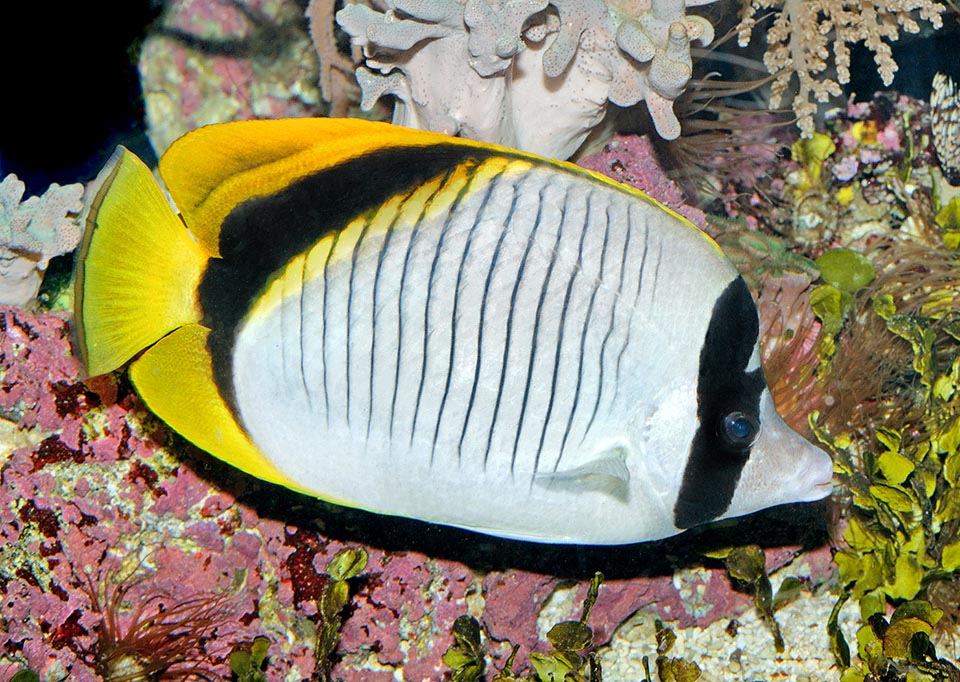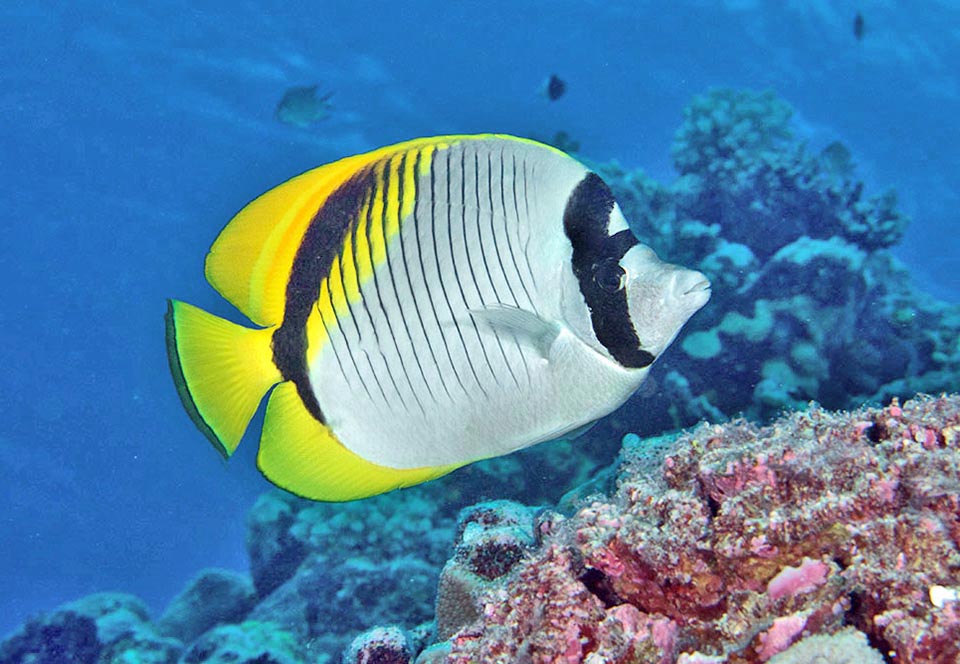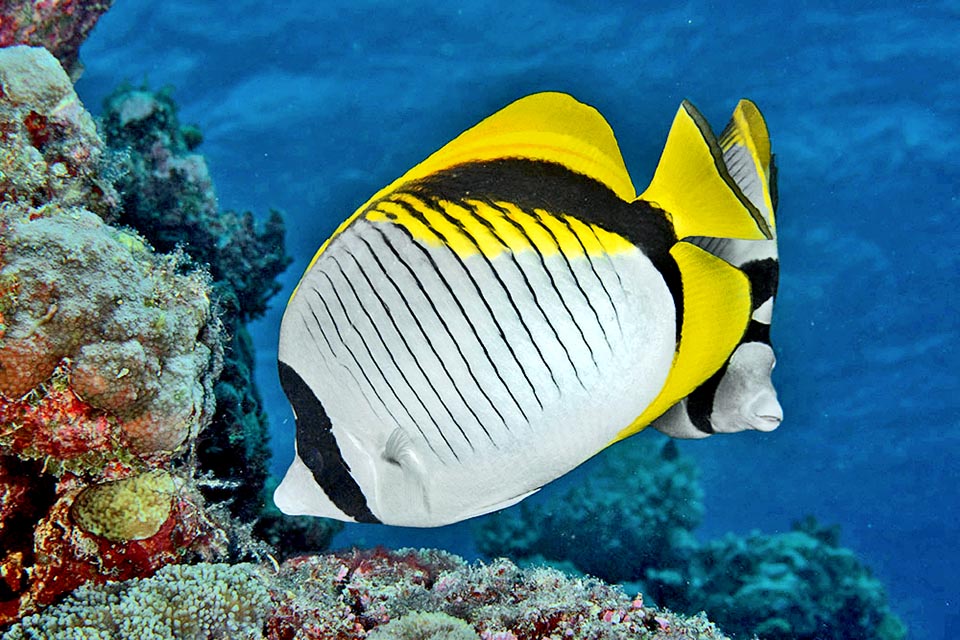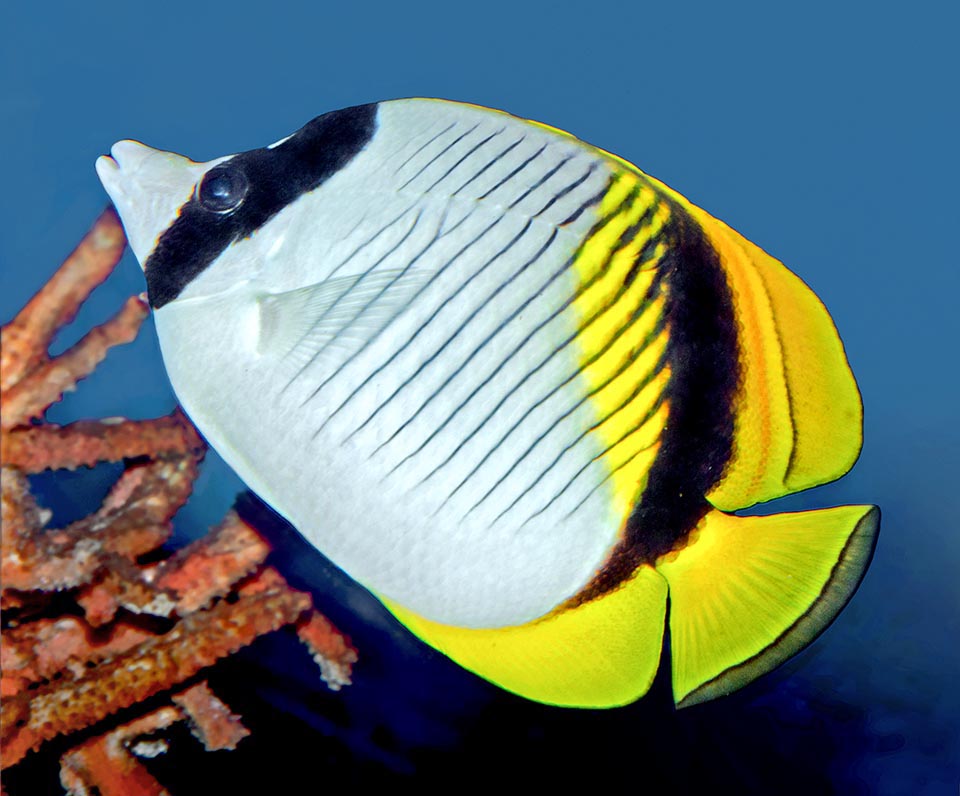Family : Chaetodontidae

Text © Giuseppe Mazza

English translation by Mario Beltramini

The Lined butterflyfish (Chaetodon lineolatus) has a vast distribution in the tropical Indo-Pacific, from the Red Sea to Pitcairn Island © Giuseppe Mazza
The Lined butterflyfish (Chaetodon lineolatus Cuvier, 1831) is the greatest in its genus. It belongs to the class of Actinopterygii, the ray-finned fishes, to the order of Perciformes and to the family of Chaetodontidae.
The name of the genus Chaetodon comes from the Greek “χαίτη” (khaite) = hair and “ὀδούς” (odous) = tooth, due to the “bristle-shaped teeth”.
The name of the species lineolatus means in Latin “with small lines”, with reference to its thin vertical stripes.
Zoogeography
It has a very vast distribution in the tropical waters of the Indo-Pacific.

It can go down to more than 170 m of depth, and being 30 cm long is the largest member of the genus Chaetodon © Paddy Ryan
We find it from South Africa, Madagascar and the Seychelles up to the Red Sea ad the Arabic Sea, and the to the Maldives, Sri Lanka, Thailand, Australia, Indone- sia, New Guinea, New Caledonia, Philippines, China and Taiwan up to southern Japan. Eastwards, it reaches the Fiji, Tonga and Hawaii islands, southwards, Norfolk and Lord Howe islands.
Ecology-Habitat
It lives in the coral formations, going down even to great depths for a butterflyfish, well beyond the 170 m.
Morpho-physiology
The Lined butterflyfish can reach the 30 cm and is the greatest member of the genus Chaetodon.

It’s often found in pairs, while eating polyps, anemones, mollusks, polychaetas and other benthic invertebrates and may reach the age of 50 years © Paddy Ryan
The body is flat, more or less oval, with elongated snout and an unusual mouth with big lips.
The dorsal fin has 12 spiny rays and 24-27 soft; the anal has 3 spiny rays and 19-22 soft; the ventral 1 spine and 5 soft rays; the pectoral ones are unarmed with 16-18 rays; the caudal is more or less blunt.
Most of the body is white with some vertical black traits stopping in the ventral zone. The back and the adjacent fins are of a nice bright yellow colour, crossed by a large curved black band more or less of the same length as the vertical one, ramified up, hiding the eye. Before the translucent zone, the tail exhibits a dark yellowish pattern.
Ethology-Reproductive Biology

Resilience is good, the fishing vulnerability is low, and it appears as “Least Concern” in the IUCN Red List © Giuseppe Mazza
The Lined butterflyfish nourishes more of benthic invertebrates than of polyps of madrepores. In its menu enter the splendid Spirobranchus, sea ane- mones belonging to the order of the Zoanthidea, the clams and even some seaweed.
It is often sighted paired, but it can move around alone or in small schools. The eggs are pelagic and the juveniles have a lifespan of 50 years. The populations can double in less than 15 months, but aquaria trade apart, the future of the species is related to that of the reefs. The fishing vulnerability index is currently low and marks 20 on a scale of 100.
Synonyms
Anisochaetodon lineolatus Cuvier, 1831; Chaetodon lunatus Cuvier, 1831; Chaetodon tallii Bleeker, 1854; Tetragonoptrus lineolatus Cuvier, 1831.
→ For general information about FISH please click here.
→ For general information about BONY FISH please click here
→ For general information about CARTILAGINOUS FISH please click here.
→ To appreciate the BIODIVERSITY of BONY FISH please click here.
→ To appreciate the BIODIVERSITY of CARTILAGINOUS FISH please click here.
